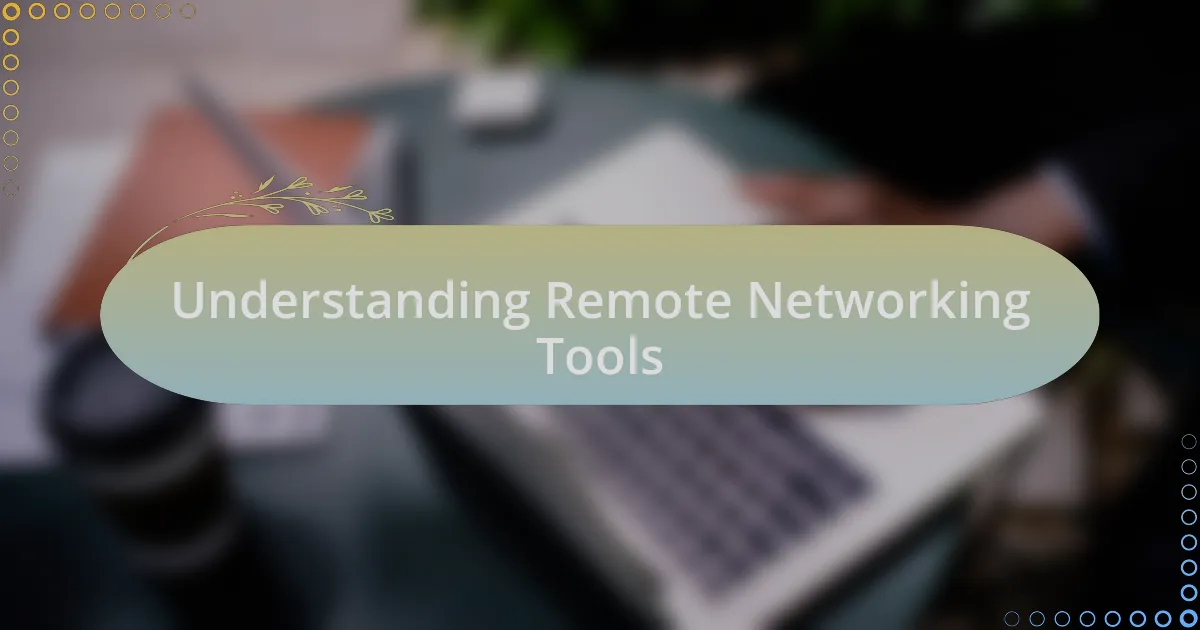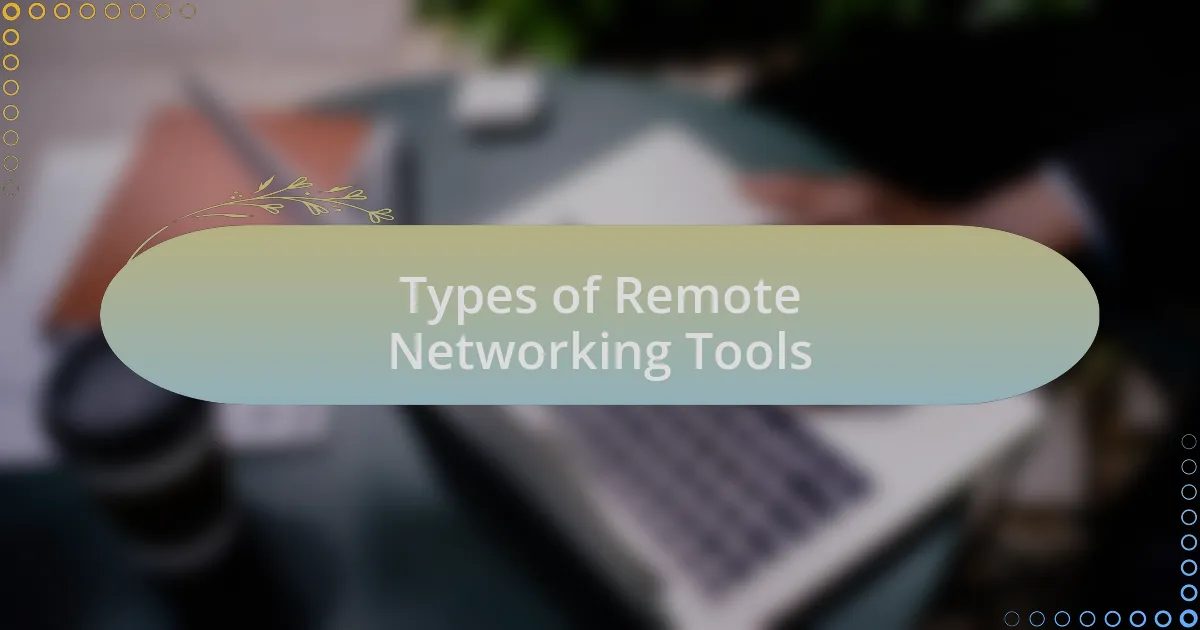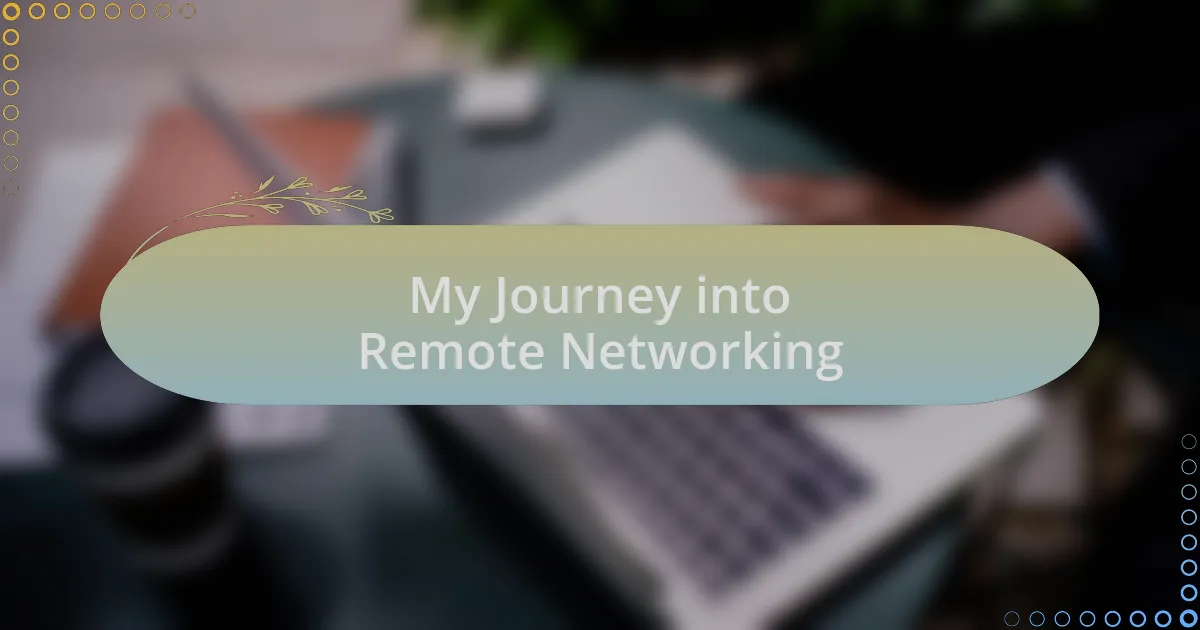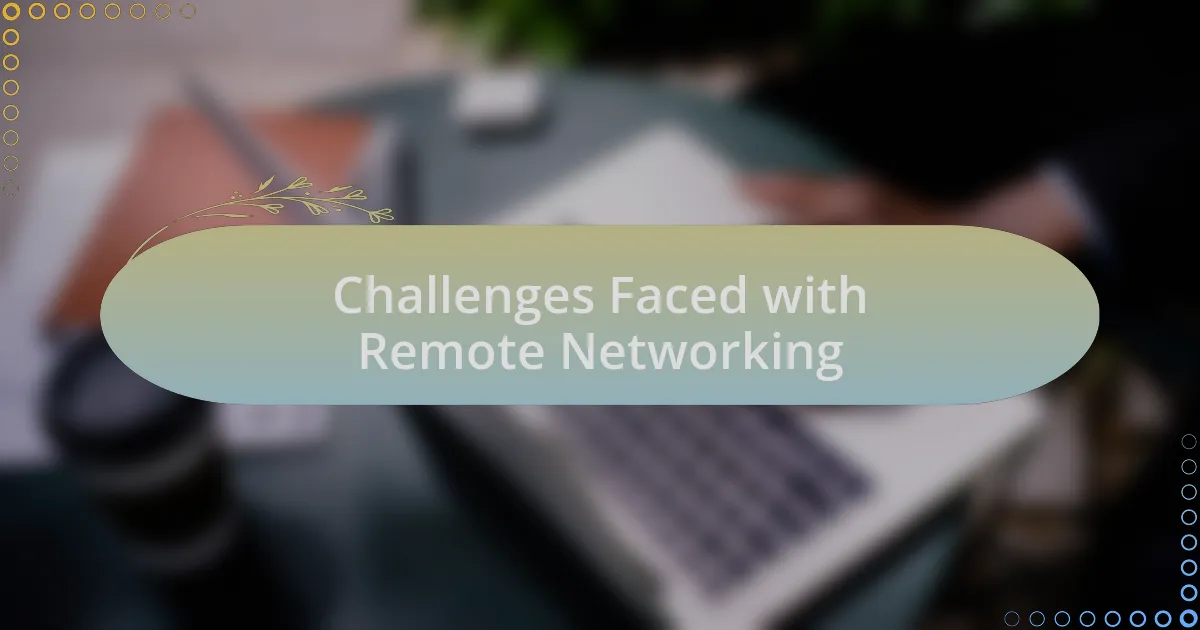Key takeaways:
- Remote networking tools, like video conferencing and messaging apps, enhance communication and collaboration across distances.
- Adapting to virtual interactions can lead to genuine connections, as demonstrated through informal conversations and shared experiences.
- Challenges include reading non-verbal cues, managing time zone differences, and combating digital fatigue, which can impact engagement.
- Preparation, follow-up, and authenticity are crucial for nurturing professional relationships in a remote networking environment.

Understanding Remote Networking Tools
Remote networking tools are essential for fostering connections, especially in today’s digitally driven landscape. I remember feeling overwhelmed the first time I used a video conferencing tool to connect with local partners. It seemed daunting, but once I figured it out, I realized how effective it could be for building relationships, no matter the distance.
These tools allow for seamless communication, enabling teams to share insights, brainstorm ideas, and collaborate in real-time. I once joined a group discussion through a remote platform where we bounced ideas off each other, and it felt just as engaging as if we were sitting in the same room. Have you experienced that exhilarating flow of conversation in a virtual setting? It’s fascinating how technology can bridge physical gaps.
Understanding the features and capabilities of these tools truly enhances their effectiveness. For instance, I often utilize screen sharing to present ideas visually, which adds another layer of clarity and engagement to our discussions. When I shifted my focus to leveraging these features, I noticed a significant improvement in my networking outcomes. It made me realize that mastering these tools is not just about using technology; it’s about enhancing the quality of our interactions and connections.

Types of Remote Networking Tools
When I think about remote networking tools, a few key types come to mind. Video conferencing platforms like Zoom and Microsoft Teams have become staples in my professional interactions. I remember a time when I joined a virtual networking event through Zoom, and despite the screen between us, the energy felt palpable. It’s hard to describe, but seeing everyone’s faces as we shared ideas truly emphasized the importance of visual connection.
Messaging apps like Slack and Discord also play a crucial role in maintaining ongoing communication with my network. In fact, I’ve set up dedicated channels for different projects or interests, which helps keep conversations organized. This method creates a vibrant atmosphere where everyone feels encouraged to contribute. Have you ever wondered how much more valuable discussions become when they flow freely without the pressure of formal settings?
Finally, there are collaborative tools such as Trello and Google Workspace that facilitate teamwork over distances. I can’t tell you how many times I’ve collaborated on project plans using Google Docs, where we edited and offered feedback in real-time. It amazes me how these tools transform a simple document into a lively exchange of ideas and opinions, making collaboration feel almost organic, despite the miles between us.

My Journey into Remote Networking
I still remember the early days of venturing into remote networking. At first, I was hesitant, wondering if virtual connections could ever rival face-to-face interactions. However, my experience shifted when I attended an online workshop where participants were encouraged to share their stories. The warmth in those exchanges surprised me; it opened my eyes to the potential of building genuine relationships, even from a distance.
As I embraced various remote networking tools, I discovered the beauty of spontaneity in conversations. One evening, I joined a small group on a casual video call just to share industry insights. It felt like gathering around a coffee table, where insights flowed naturally, leading to unexpected collaborations. Isn’t it fascinating how some of the best ideas can emerge from a relaxed chat rather than a formal meeting?
Each step in my remote networking journey has taught me the value of adaptability. I clearly recall a time when an important connection almost slipped away due to a missed email. I quickly switched gears and set up a virtual coffee chat instead. That decision not only salvaged the connection but ultimately led to a fantastic opportunity. Have you ever found that taking a different approach can unlock doors you’d never considered?

Challenges Faced with Remote Networking
Navigating the world of remote networking isn’t without its hurdles. One challenge I faced was the difficulty in reading non-verbal cues during virtual meetings. I remember participating in a crucial discussion where the lack of eye contact made it tough to gauge reactions. It left me wondering if my points were resonating, or if I was just talking into the void.
Another significant obstacle was managing time zone differences. I’ve often found myself scheduling calls at odd hours, just to accommodate others across the globe. Once, I joined a networking event at 6 AM, coffee in hand, only to discover that half the attendees were still asleep! It made me reflect on how these logistical hurdles can not only affect attendance but also the overall energy of team interactions.
Finally, I experienced the challenge of digital fatigue. After a long week of video calls, my enthusiasm dwindled. I vividly recall a networking session where everyone struggled to engage, and the conversation felt stilted. It led me to ponder: how do we keep the spark alive in an increasingly virtual world? Finding fresh ways to interact—like incorporating games or varied formats—has become essential to re-energizing these connections.

Tips for Effective Remote Networking
When it comes to effective remote networking, I’ve found that preparation is key. Before attending a virtual event, I always take a moment to research the participants, so I can approach conversations with genuine interest. This strategy paid off during a recent online meetup when I discovered a mutual interest in sustainable practices with another attendee. It opened the door to a fantastic conversation that I believe wouldn’t have happened without that preparation.
Another tip I’ve learned is to embrace the power of follow-up. After a networking event, I make it a habit to send personalized messages to those I connected with. One time, I followed up with a contact I had spoken to about collaborating on a project. I expressed my appreciation for their insights, and this simple gesture transformed our initial discussion into a budding professional relationship. It’s a reminder that these connections require nurturing to flourish.
Also, don’t underestimate the value of authenticity. During a virtual networking event, I once shared a personal story about a challenge I faced in my business. It was a risk, but the response was overwhelmingly positive. People resonated with my vulnerability, and several reached out afterward, eager to share their experiences. This taught me that being real can break down barriers and create stronger connections in the remote networking landscape.